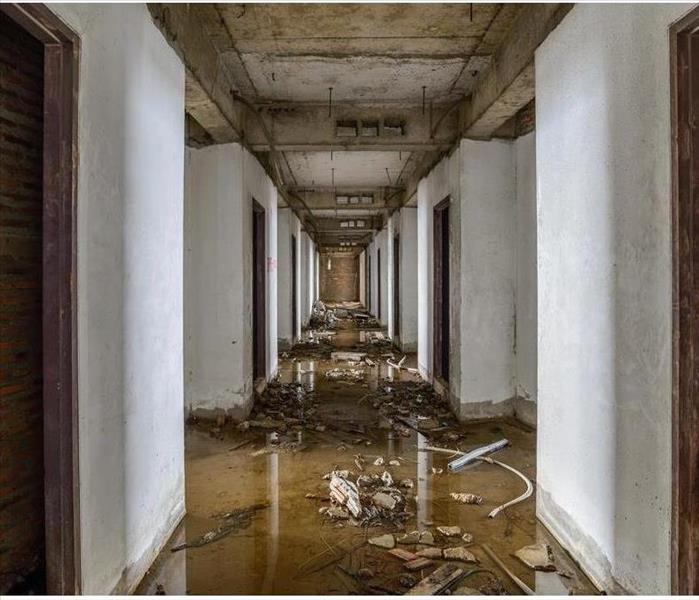How To Minimize Moisture-Related Damage to Your Building
11/12/2021 (Permalink)
 After a severe storm at your Burnt Store, FL, business, flood, and rain damage can wreak havoc on your property.
After a severe storm at your Burnt Store, FL, business, flood, and rain damage can wreak havoc on your property.
How To Minimize Moisture-Related Building Damage
After a severe storm at your Burnt Store, FL, business, flood and rain damage can wreak havoc on your property. Hidden moisture can lead to structural problems and health-related hazards such as black mold, which may require the services of a water damage restoration company. In many cases, this scenario can be avoided by making sure your building is ready before a storm hits. Your first line of defense is the building envelope, which is essentially the outer covering of the building. This consists of:
- The wall system above the ground (above grade)
- The wall system below the ground (below grade, i.e. basement walls)
- The roof
The Envelope Protects Everything
If the envelope is well maintained, it should contain a barrier to control air movement, a barrier to keep moisture from entering, sufficient insulation, and an effective way to drain away any water that might intrude from the outside. Walls can let water in when there is simultaneously the presence of water, forces like pressure differentials or wind that drive the water inward, and there are openings such as windows, doors, or gaps and cracks.
Maintaining the Building Envelope
While it's impossible to keep out every bit of moisture from outside, many steps can be taken to seriously minimize water infiltration. It's important to keep gutters in good shape and, if possible, have sloping surfaces, diversions and baffles in place to help divert water. Make sure any cracks or areas around windows and doors are properly sealed, and that there are proper conditions for evaporation, drainage and ventilation. Additional protection may be provided by secondary systems such as through-wall flashing, which can divert water that has entered from outside before damage can occur. Surfaces may also be treated with damp-proofing agents, and small openings called weeps can be made to allow drainage to the outside.
With a bit of planning and effort, a great deal of flood and rain damage can be prevented before has a chance to happen. Following the instructions above can go a long way toward making your building safe from moisture damage.



 24/7 Emergency Service
24/7 Emergency Service